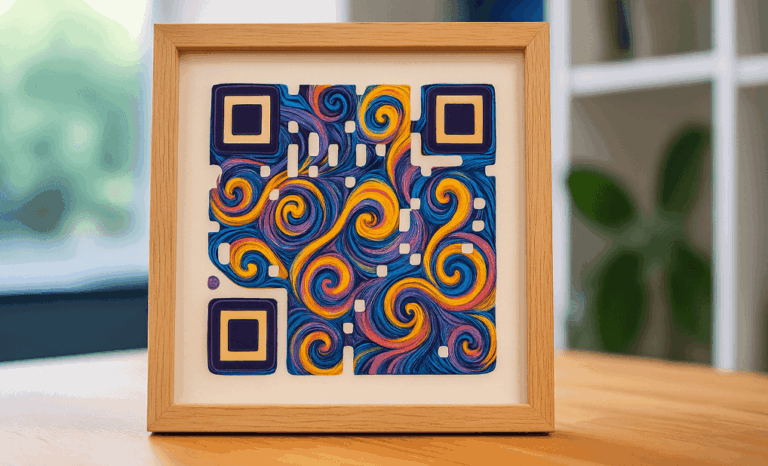In the past, QR codes were little more than black-and-white boxes—a technical solution, not a visual asset. But that’s changing fast. With the rise of AI tools and smarter customization options, the scannable artistic QR code is becoming a key player in modern branding and marketing. These codes aren’t just beautiful—they work. And that balance between form and function is reshaping how we think about QR code design.
Let’s explore how you can create artistic QR codes that not only turn heads but scan flawlessly, whether you’re designing for packaging, posters, or personal projects.
What is a scannable artistic QR code?
A scannable artistic QR code is a type of QR code that blends visual creativity with technical functionality. It integrates artistic elements—colors, logos, backgrounds, textures, or even entire illustrations—while remaining fully readable by any standard QR code scanner.
These aren’t just decorative experiments. They’re high-performing tools that can link users to websites, marketing materials, contact details, social media profiles, or any digital destination, without compromising scan rates.
Why artistic QR codes matter more than ever
We live in a visual-first, scroll-fast digital age. And in this landscape, attention is currency. Standard black-and-white QR codes might do the job, but they rarely spark interest. Artistic QR codes, on the other hand, are built to grab attention and hold it—without sacrificing usability.
If you’re a marketer, designer, or event organizer, you already know that visual consistency matters. A scannable artistic QR code lets you align the code with your brand colors, fonts, or campaign visuals. It becomes part of your creative identity—not an afterthought.
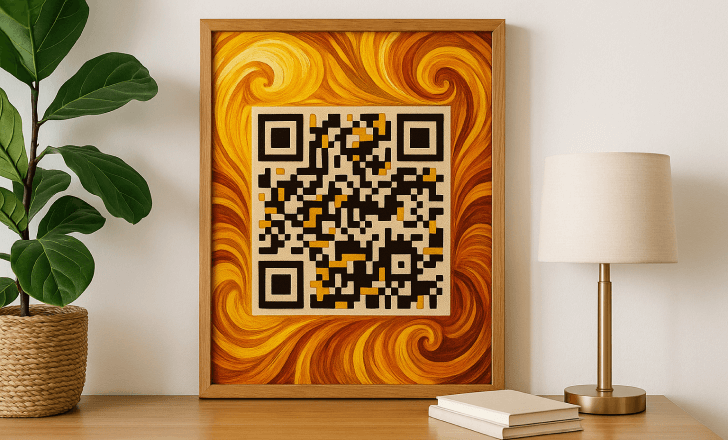
The balance between art and scanability
Designing QR codes with artistic flair doesn’t mean ignoring the fundamentals. If your QR code doesn’t scan instantly, it’s a fail—no matter how beautiful it looks.
To ensure reliable performance, every generated QR code must:
- Have sufficient contrast between the foreground and background
- Retain key structural zones like the “eyes” and quiet zone
- Avoid distorting essential QR code types or their patterns
Platforms like QR Code KIT automatically test each design for scanability, letting you experiment creatively while staying within safe limits. You can preview the QR code output in high-quality PNG or other formats and confirm it scans before publishing.
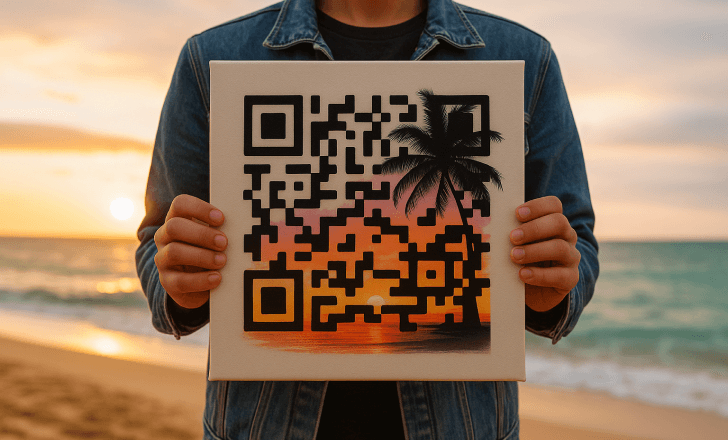
How to create a scannable artistic QR code
Creating a QR code that looks stunning and works flawlessly is easier than ever—especially with tools powered by artificial intelligence.
Here’s how it works on QR Code KIT:
- Choose your destination: Simply input the link, file, business card, or contact details you want your QR code to lead to.
- Select your design: Use artistic templates or upload your own image. You can also generate AI-powered QR codes using your own prompt for a completely unique look.
- Customize creatively: Adjust colors, embed your logo, change frames, and choose fonts that match your brand.
- Check scanability: Use the built-in scanner test to ensure your custom QR code functions properly.
- Download and share: Export your high-quality PNG and use it across your packaging, posters, websites, or marketing materials.
With dynamic QR codes, you can even change the destination later—without reprinting anything.

The rise of AI-powered QR codes
AI has opened the door to a new generation of creative QR code design. Instead of relying solely on templates, generative AI technology like Stable Diffusion can now create scannable artistic QR codes that merge seamlessly with full illustrations, product mockups, or brand storytelling.
Want your QR code hidden in a galaxy illustration, or integrated into a vintage poster? AI QR code tools make that possible—while still delivering a functional QR code output.
This is especially powerful for:
- Limited-edition packaging
- High-end product drops
- Creative business cards
- Art installations and interactive signage
Just like AI-generated images for branding, these QR codes allow your visual identity to become interactive.
Where to place artistic QR codes for best results
Even the most creative QR code won’t perform if it’s hidden in the wrong spot.
To optimize scan rates:
- Keep it visible: Place your QR code where the eye naturally lands—like the bottom-right corner of a label or centered on a poster.
- Avoid clutter: Give it breathing room so it doesn’t get lost in busy designs.
- Test in context: Print and scan it under real conditions to check lighting, size, and contrast.
This is especially important in retail environments, where you might have just a few seconds to catch a shopper’s attention.
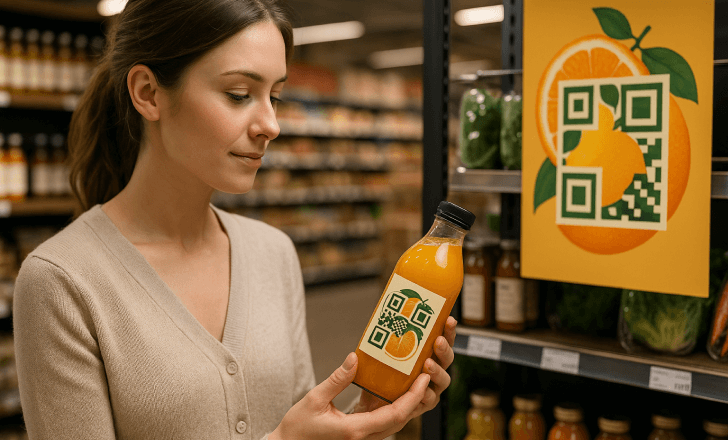
Who uses scannable artistic QR codes?
You’ll find artistic codes in more places than you think. They’re increasingly used by:
- Event organizers: For tickets, schedules, and AR experiences
- Restaurants and cafés: To share menus or contactless payment links
- Retailers: To deliver rich product information via dynamic QR codes
- Artists and musicians: To link to portfolios, audio samples, or merch
- Small businesses: For eye-catching business cards or store signage
The common thread? These users don’t want their codes to look generic—they want them to be part of their brand’s creative language.
Custom QR code vs. traditional QR code: What’s the difference?
A traditional QR code is functional, but purely utilitarian. It does the job—but that’s it.
A custom QR code, by contrast, lets you:
- Match brand colors
- Embed your logo
- Choose unique shapes or frames
- Control the landing experience with a branded page
When you add artistic elements to this, you get a scannable artistic QR code that not only works, but also builds brand trust and recognition. That’s a major upgrade from the default black box.
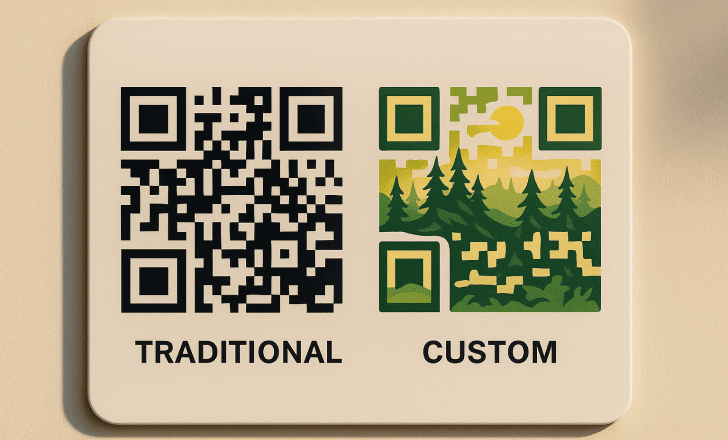
Can free QR code generators create artistic QR codes?
Yes—up to a point. Many free QR code generator tools let you customize colors and add logos. But for advanced artistic QR codes, especially those generated with AI or requiring branding consistency, you’ll need a professional tool like QR Code KIT.
With QR Code KIT, even the Free Plan includes dynamic QR creation, customization options, and scan testing. You can upgrade later for more features like analytics, bulk generation, or API access.
How to make sure your artistic QR code remains functional
Here are a few best practices to ensure your creative QR remains fully scannable:
- Avoid low contrast: White on pastel? Bad idea.
- Watch out for busy backgrounds: A textured image can obscure the code.
- Respect the quiet zone: Don’t let other design elements touch the edges.
- Use high-resolution output: Always export a high-quality PNG or vector.
- Test at various sizes: What scans well on screen may not work in print.
Want to see examples of QR code art that nails both form and function? Just check out the templates gallery on QR Code KIT—each design is optimized for readability and visual impact.
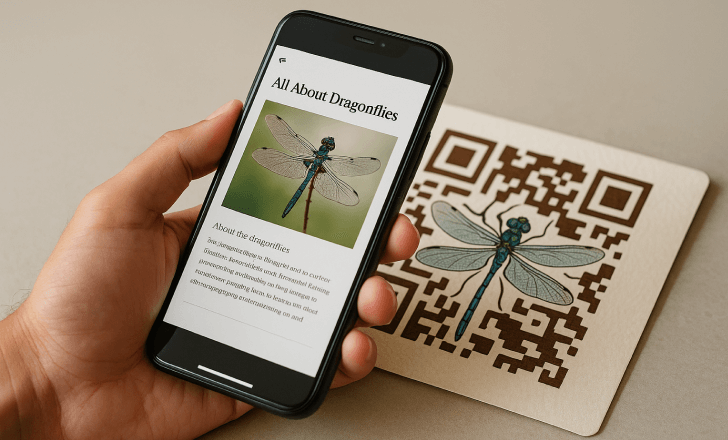
What types of QR codes can be customized artistically?
Not all QR code types are equal when it comes to customization.
Here are the most common scannable QR types used in artistic designs:
- URL: The most common, perfect for marketing campaigns and websites
- vCard / business card: Great for professionals and creatives
- File: Share PDFs, images, or audio files
- Location: Used in tourism, events, or real estate
- Text and SMS: For simple, direct communication
Dynamic QR codes offer the most flexibility, as you can update destinations anytime without reprinting the code—ideal for evolving content.
Can you embed a QR code in a logo or artwork?
Yes—but carefully. Embedding a QR into a logo or image (a style sometimes called hidden QR code art) requires precise balance. The code still needs to meet scannability standards, even if it blends into the background or becomes part of a visual motif.
This technique works best when you:
- Keep the core QR structure intact
- Add decoration around the edges or behind it
- Use AI tools that optimize scanability while enhancing style
Done well, it creates an immersive brand experience that invites people to scan—not just out of necessity, but out of curiosity.
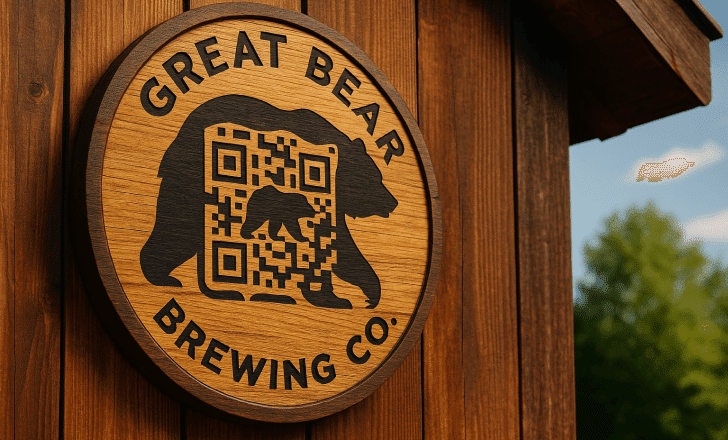
Are artistic QR codes effective for marketing?
Absolutely. In fact, they often perform better than traditional codes.
Here’s why:
- They attract more scans: Especially in crowded visual spaces
- They support storytelling: By tying into your visual narrative
- They feel premium: Adding value to packaging or printed materials
- They encourage sharing: On social media or in digital platforms
By using an artistic QR as part of your branding strategy, you turn every physical touchpoint into a digital gateway—without sacrificing aesthetic quality.
Final thoughts: Design for the eye, test for the scan
A scannable artistic QR code is more than a clever design trick—it’s a tool for connection. It bridges creativity and utility in a way that’s perfect for the modern marketer, artist, or business owner.
And with platforms like QR Code KIT, you don’t need to choose between beautiful and functional. You can create a QR code that works beautifully—and looks like it belongs.
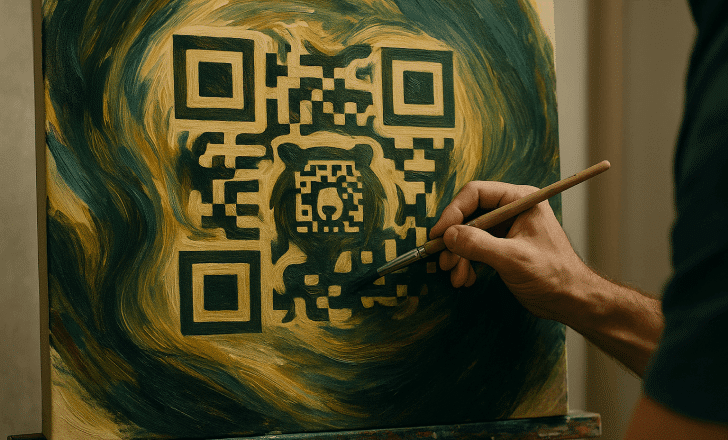
How can I create a scannable artistic QR code for my brand?
Use a professional QR code generator like QR Code KIT. Start with your goal—what should the QR link to? Then customize the code using your brand colors, logo, or artistic prompts. Test the scannability, export a high-quality PNG, and you’re ready to use it on packaging, posters, or digital platforms.
What tools do I need to generate AI QR code designs?
You can use AI-powered tools built into QR Code KIT to generate codes based on your own prompt. These tools combine artistic designs with scanability checks. You don’t need to master Stable Diffusion or generative AI tech yourself—the platform does the heavy lifting.
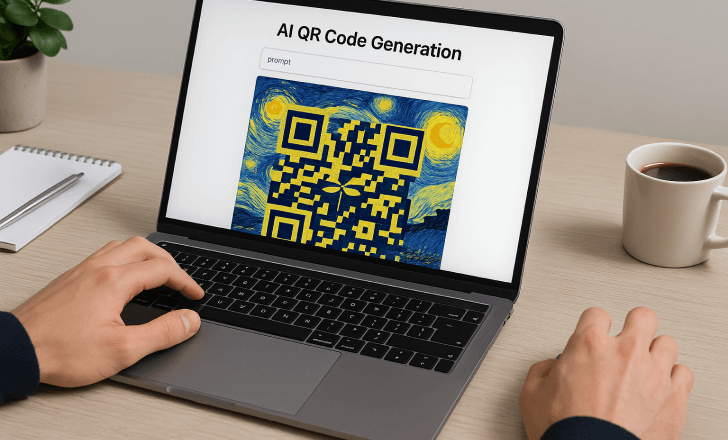
What’s the difference between dynamic and static artistic QR codes?
Static QR codes point to a fixed destination and can’t be edited after printing. Dynamic QR codes, by contrast, let you update the target anytime. This is ideal for marketing campaigns, seasonal content, or projects that evolve over time. Artistic QR codes can be either type, but dynamic gives you more flexibility.
